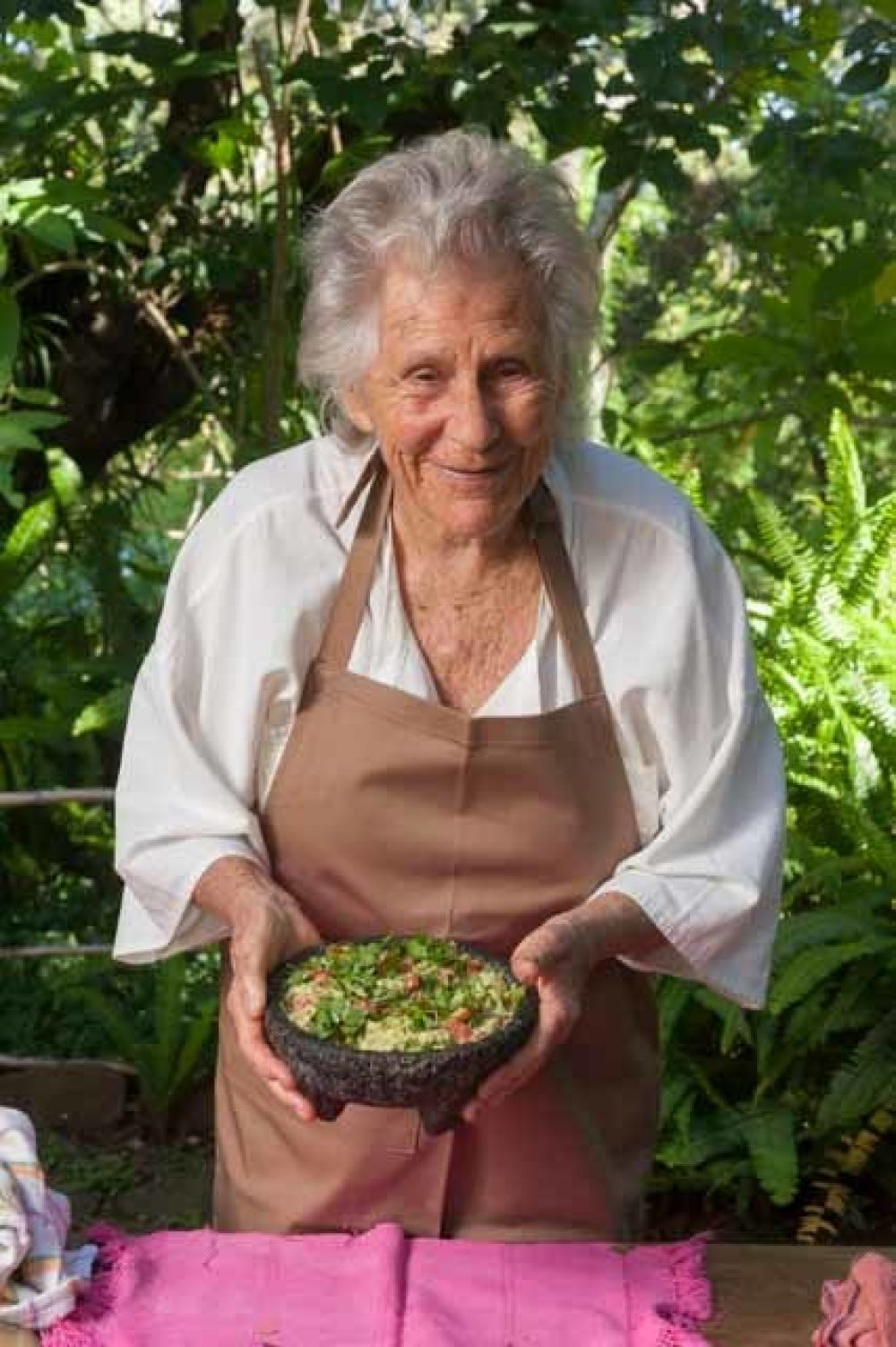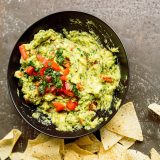To Americans it borders on anathema, but Diana Kennedy is adamant. Lime juice has no place in guacamole. Nor garlic.
It’s a difficult point to argue with the woman who is likely the greatest living authority on Mexican cuisine. Plus, she’ll curse you down if you try.
Still, we were skeptical. Could guacamole without the bright tang of lime and mild bite of garlic still taste fresh and balanced?
To find out, we traveled to San Francisco Coatepec de Morelos, the tiny hillside village three hours outside Mexico City where Kennedy has lived for decades, chronicling the regional and mostly rural cuisines of Mexico. She would teach us the simplest form of the dish, that served in central Mexico.
Cooking lessons with Kennedy are as informal—“Do you want some mezcal? Drink some damn mezcal!”—as they are informative—“Don’t let any damn fool tell you to take the seeds out of the serranos!”
Like most of us, I consider a good guacamole to be an act of minimalism and balance. Fatty avocado reined in by heat and acid. Not a whole lot more. It quickly became evident that while right, I was also completely wrong. And in ways I hadn’t even considered.
Kennedy made several batches of guacamole as we stood on the stone patio outside her kitchen, overrun with dense growth—herbs, citrus trees and hot peppers. Nearby were wood-fired ovens and solar stoves sent to her by Jose Andres (used to preheat her cooking water in the sun). She explained the rules of guacamole while mashing avocados in her 60-year-old molcajete.

Diana Kennedy
Diana Kennedy’s guacamole is a portrait of minimalism and balance.
First, the primary seasoning of guacamole should come from just three things: serrano chilies, white onion and cilantro. No bacon. No corn. No fruit. Certainly no kale or peas. Most importantly, no garlic. Never garlic. None of these is traditional. And garlic in particular does nothing but compete with the cleaner flavors of the avocados, chili peppers and cilantro.
Second, don’t mince the ingredients. Don’t mash them, either. “You lose all the juices,” Kennedy scolded. “Everybody wants to mince, mince, mince! It drives me mad. Of course, a lot of things drive me mad. But you don’t want to mash.”
At least not yet. For now, they should be chopped, those serrano seeds and all. The heat and flavor live in the seeds. Only idiots remove them, so I was told.
The mashing only occurs once those ingredients move from the cutting board to the bowl. Otherwise you leave juices—and flavor—behind. Whether you use a mortar and pestle or a mixing bowl and the back of a fork, the onions, chilies and cilantro get mashed to a paste that permeates the avocados.
Finally, that lime juice. Kennedy agrees that acid is key to a great guacamole. It balances the fat of the avocados and slows oxidation (that ugly browning). But the acid shouldn’t come from lime juice, a flavor Kennedy says only overwhelms the avocados and also isn’t traditional.
In Mexico, tomato provides the acid. Chopped fresh tomatoes offer a gentler acidity and flavor that—unlike limes—complement rather than compete with the other ingredients.
The taste of Kennedy’s guacamole was clean, simple and balanced, the perfect foil for a crunchy-salty tortilla chip. Unlike so many American guacamoles, it tasted of fresh, bold avocado, not sharp lime juice.
Back at Milk Street, we still didn’t take Kennedy at her (impossibly well-informed) word. We tested shallots and yellow onions. We changed the ratio of tomatoes and chilies. We even tried removing the serrano seeds.
But Kennedy’s basic recipe proved best. Some of us also liked a version that substituted an equal amount of tomatillos for the tomatoes. But we’re pretty sure Kennedy would have a few choice words for that.




